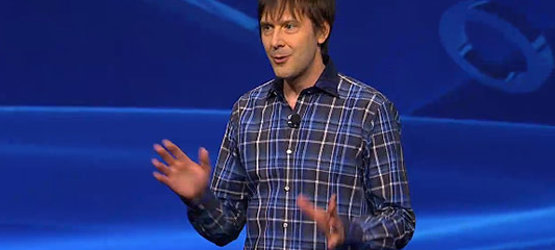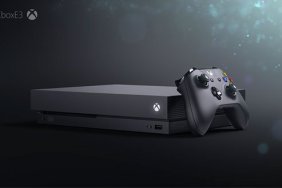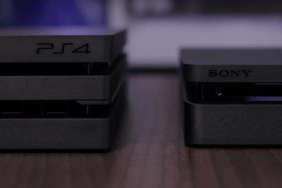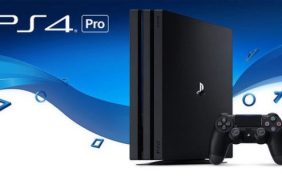Sony have released further details about the PlayStation 4’s specs through a press release, which we’ve compiled below, along with the comments of longtime chip analyst at the Linley Group, Kevin Krewell, courtesy of VentureBeat.
The PS4 will have a local hard disk drive, 8GB of main memory (RAM) that is the ultra-fast GDDR5, an enhanced PC GPU, and an AMD 64-bit x86 processor. Sony’s Mark Cerny called it a “custom processor,” which means that AMD’s 8 cores have been combined in a unique way.
The PS4 will use its GPU for particle physics processing, which suggests GPU Compute, Krewell said. That likely means it will support OpenCL computing (something job listings PSLS have uncovered also suggest), or using the graphics cores to do nongraphics tasks. The spec sheet says that the GPU has 18 compute units that will collectively produce 1.84 teraflops of computing power, when this is with the CPU, the computing power is over 2 teraflops. Krewell added that the 176GB/s of memory bandwidth is 3.7 times the bandwidth of the Cell processor + Nvidia RSX (GDDR3) graphics chip in the PS3. The 8GB of GDDR5 memory is a whopping 16 times the memory of the PS3. As Sony didn’t share info on any other speeds and feeds, Krewell said that it’s hard to estimate clock speeds and which AMD processor and graphics cores are in it.
The 8GB of GDDR5 memory was easily the biggest spec surprise at the show – previous rumors pegged it at 4GB of GDDR5 memory compared to a comparable 8GB of rumored DDR3 memory (slower on the Xbox 720). 8GB of GDDR5 memory blows that out of the water. Digital Foundry notes:
From an engineering perspective, it’s a remarkable achievement. Sony itself doesn’t fabricate memory, it buys from major suppliers who advertise the parts available months (sometimes years) ahead of delivery, so we have a decent idea of what options the platform holders have on the table in creating their next-gen systems. The GDDR5 memory modules – the same used in PC graphics cards – are only available in certain configurations, with the densest option available offering 512MB per module. The startling reality is that unless Sony has somehow got access to a larger chip that isn’t yet in mass production and that nobody knows about, it has crammed 16 memory modules onto its PS4 motherboard. To illustrate the extent of the achievement, Nvidia’s $1000 graphics card – the GeForce Titan – offers “just” 6GB of onboard GDDR5.
…What shouldn’t be understated is the amount of extra cash this is going to add to PlayStation 4’s BOM (bill of materials) – this is an expensive, massive investment for the company.
In other hardware news, the PS4 has, unsurprisingly, been confirmed to sport a Blu-ray drive. This time, however it will be able to read 6X Blu-ray and 8X DVD discs, much faster than the 2X Blu-ray on the PS3 that forced game installs and long loading.
There will be analog, HDMI and digital optical output options, USB 3.), Ethernet and Bluetooth 2.1.
Krewell said:
It’s very comparable to a mid- to high-end gaming PC. Even though the CPU is combined with the GPU on one die, like most PC processors today, the higher bandwidth memory and custom design indicates it should have graphics performance more like a discrete GPU found in a gaming PC.
Of course, as the PS4 won’t be running Windows and the hardware is consistent, the graphics and general power that developers will be able to squeeze out of the PS4 will surpass those of technically comparable PC gaming rigs. The use of more conventional hardware will also make development easier, and hardware costs lower. However, it could mean that the PS4 risks being too much like a PC, and then being outstripped by better rigs in the coming years.
Moving to PC tech also ends backwards compatibility, something that will require Gaikai cloud streaming to work.
What do you think about the specs? Are you excited that Sony is putting a lot of money into the RAM – easily the biggest problem with the PS3? Let us know in the comments below.








